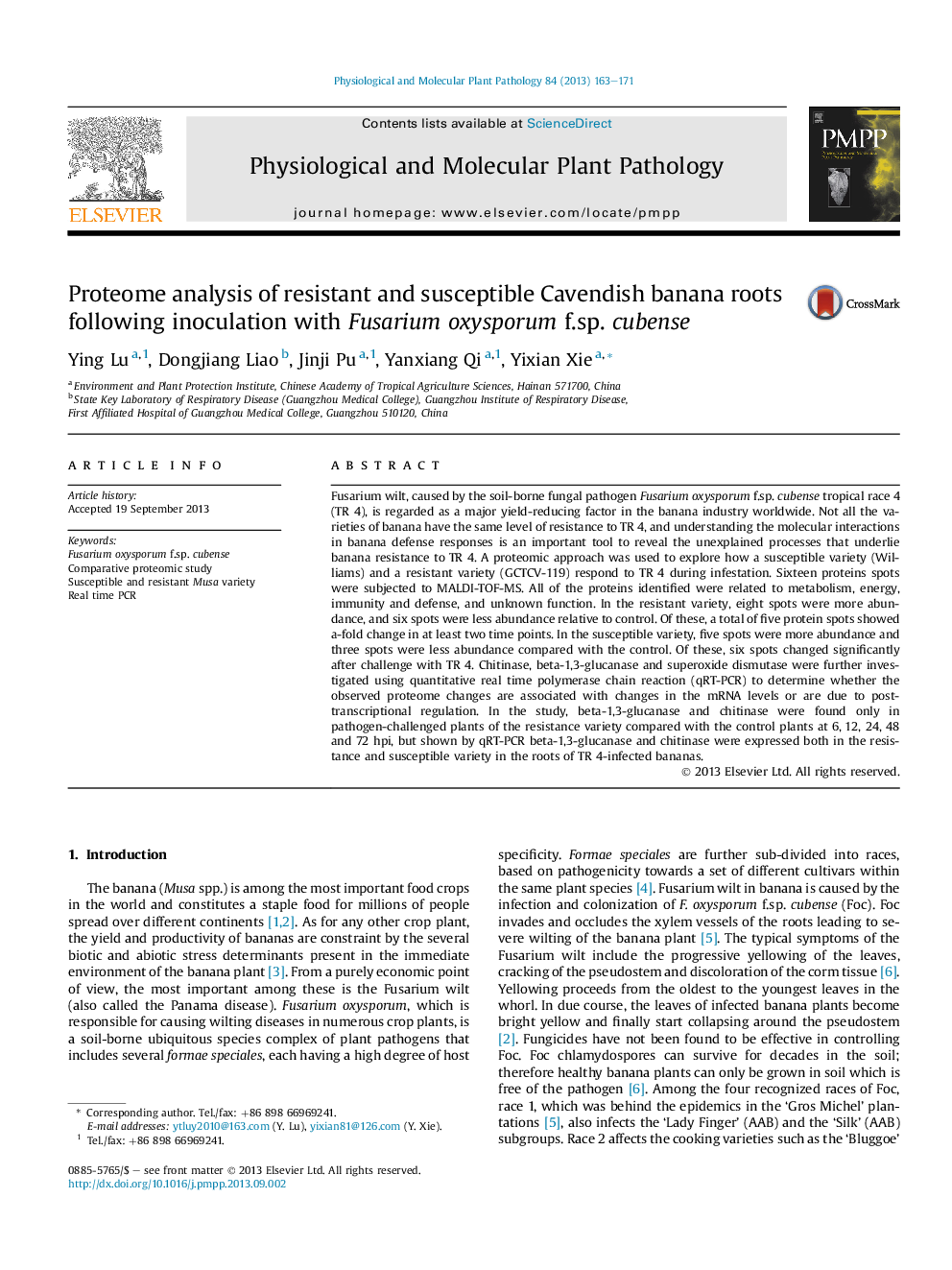| Article ID | Journal | Published Year | Pages | File Type |
|---|---|---|---|---|
| 2836400 | Physiological and Molecular Plant Pathology | 2013 | 9 Pages |
•Using comparative proteomic approach to explore the molecular mechanisms Musa to TR 4.•Sixteen banana roots proteins identified by two-dimensional gel and mass spectrometry.•A summary of the identified proteins and their putative functions is discussed.
Fusarium wilt, caused by the soil-borne fungal pathogen Fusarium oxysporum f.sp. cubense tropical race 4 (TR 4), is regarded as a major yield-reducing factor in the banana industry worldwide. Not all the varieties of banana have the same level of resistance to TR 4, and understanding the molecular interactions in banana defense responses is an important tool to reveal the unexplained processes that underlie banana resistance to TR 4. A proteomic approach was used to explore how a susceptible variety (Williams) and a resistant variety (GCTCV-119) respond to TR 4 during infestation. Sixteen proteins spots were subjected to MALDI-TOF-MS. All of the proteins identified were related to metabolism, energy, immunity and defense, and unknown function. In the resistant variety, eight spots were more abundance, and six spots were less abundance relative to control. Of these, a total of five protein spots showed a-fold change in at least two time points. In the susceptible variety, five spots were more abundance and three spots were less abundance compared with the control. Of these, six spots changed significantly after challenge with TR 4. Chitinase, beta-1,3-glucanase and superoxide dismutase were further investigated using quantitative real time polymerase chain reaction (qRT-PCR) to determine whether the observed proteome changes are associated with changes in the mRNA levels or are due to post-transcriptional regulation. In the study, beta-1,3-glucanase and chitinase were found only in pathogen-challenged plants of the resistance variety compared with the control plants at 6, 12, 24, 48 and 72 hpi, but shown by qRT-PCR beta-1,3-glucanase and chitinase were expressed both in the resistance and susceptible variety in the roots of TR 4-infected bananas.
